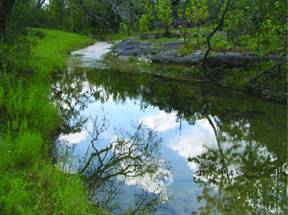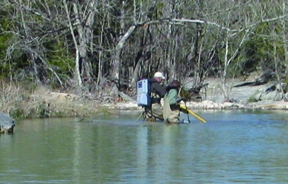Hamilton Creek Biological Assessment
Hamilton Creek Biological Assessment

About 30 miles southwest of Austin, Texas lies a historic swimming hole on the Hamilton Pool Preserve, a 232-acre segment of protected habitat where BIO-WEST conducted a preliminary evaluation of the effects of sedimentation on the biological community in Hamilton Creek and its popular pool.
A seasonally flooded stream with perennial pools, Hamilton Creek is home to a variety of fish and macroinvertebrates. Our biological sampling focused on fish and macroinvertebrate communities (as well as their associated habitats) and involved seining, electrofishing, dip netting, water quality sampling, and habitat mapping.

Fish and macroinvertebrates are two groups of biological indicators that have been used as “environmental indicators” because they offer a signal of the biological condition in a watershed. Fish are good indicators of watershed health because they live in the water all their lives, differ in their tolerance to amount and types of pollution, are easy to collect with the proper equipment, and live for several years. Aquatic invertebrates, also called benthic macroinvertebrates, make good indicators of watershed health because they live in the water for most of their lives, stay in areas suitable for their survival, have limited mobility, often live for more than 1 year, and are integrators of environmental condition. This study helped determine whether recent sedimentation impacted the creek’s aquatic community.

